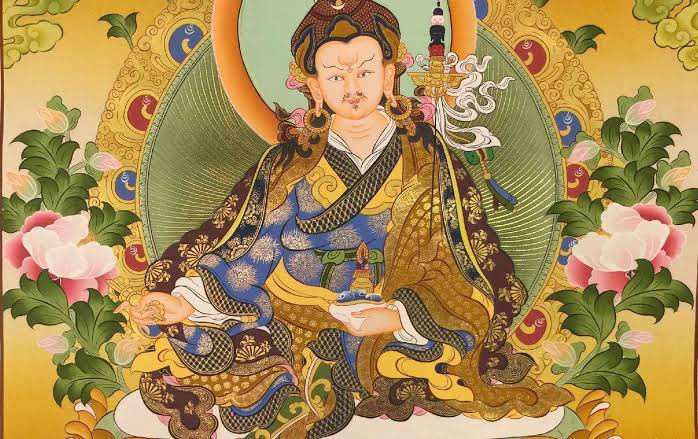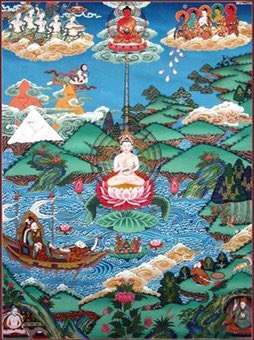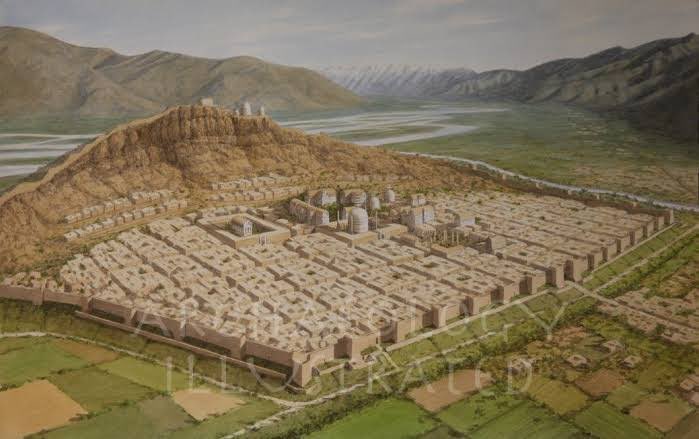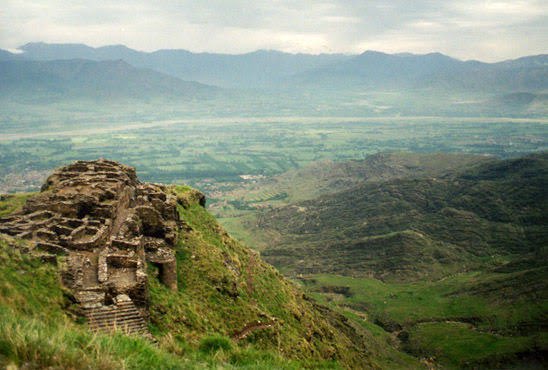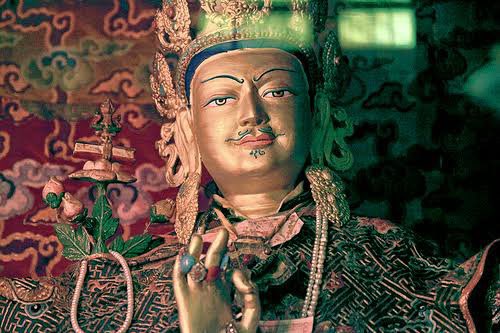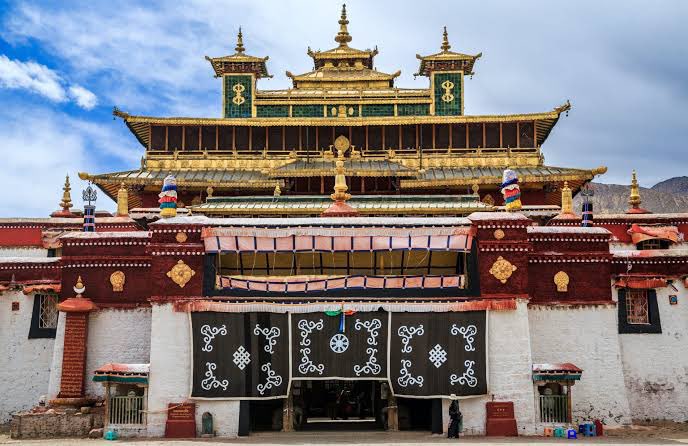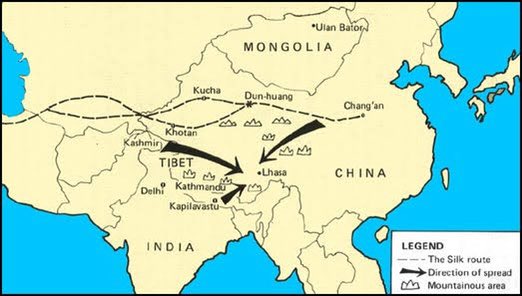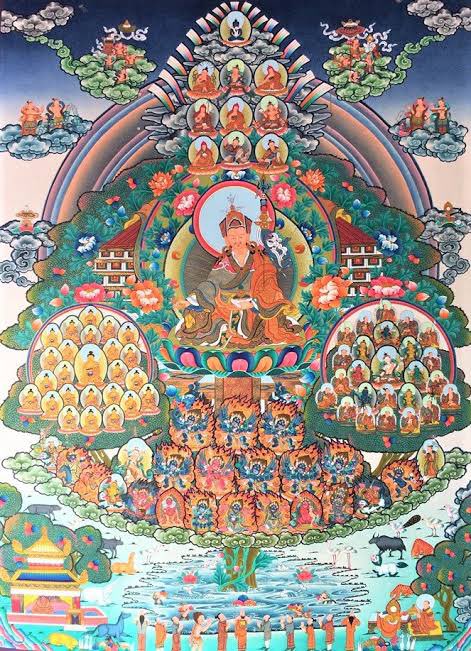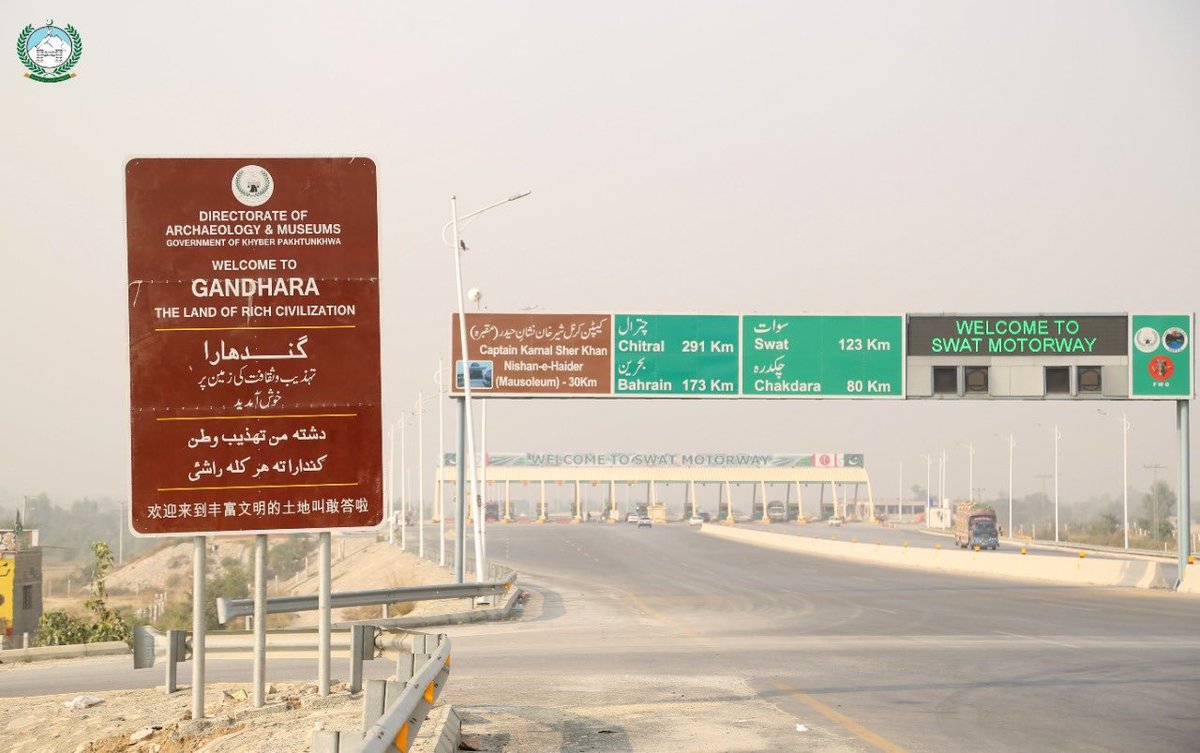Lesser Known Fact:
Of the many portions of the grandeur of Buddhist heritage that Pakistan boasts of, one is reserved for Padmasambhava of Swat;
One of the most revered figures in Tibet, known to many as the ‘2nd Buddha’.
[Thread on the Life and Teachings of Padmasambhava]
Of the many portions of the grandeur of Buddhist heritage that Pakistan boasts of, one is reserved for Padmasambhava of Swat;
One of the most revered figures in Tibet, known to many as the ‘2nd Buddha’.
[Thread on the Life and Teachings of Padmasambhava]
Padmasambhava is known as, amongst other names, as Guru Rinpoche in Tibet which means ‘Precious Guru’. He is one of the most important religious figures of Tibetan Buddhism and has a niche for himself in Tibet, Nepal and the Himalayan regions of India.
Much of his life is obscure and known to us through legends and myths which includes the story of his birth which is shown in his name Padmasambhava (Lotus Born). The story relates that he was born as a miracle on top of a lotus in a lake in Udyaana. The king adopted -
him as his son and heir and Padmasambhava even ruled for 5 years before leaving his kingdom and travelling throughout South Asia visting important sites of Buddhist pilgrimage and practice. But it is Udyaana which -
Which brings us to his relationship to modern Pakistan.
Udyaana was a Kingdom located in modern day swat. It was one of the primary routes employed by Buddhists whilst visiting Gandhara through its connection to Chilas in GB. Swat is still well known for its Buddhist heritage.
Udyaana was a Kingdom located in modern day swat. It was one of the primary routes employed by Buddhists whilst visiting Gandhara through its connection to Chilas in GB. Swat is still well known for its Buddhist heritage.
Udyana also Literally means garden which is ancient nod to the beauty of swat which still exists.
Thought not fully confirmed, Padmasambhava was born in the city of Udegram, known in the ancient world as Ora; 1 of the 3 cities who battled Alexander in Swat.
Thought not fully confirmed, Padmasambhava was born in the city of Udegram, known in the ancient world as Ora; 1 of the 3 cities who battled Alexander in Swat.
In the year 746, the 38th Tibetan emperor Trisong De Tsen finding it difficult to properly propagate Buddhism in his realm invited Padmasambhava to ‘tame the local deities’. He arrived in Tibet in the spring of 747 and completed this request.
After this task Padmasambhava was credited to have created the first Buddhist monastery of Tibetan history, known as the Samye Monastery. This monastery would later go on to become the base of the Buddhist school formed by his followers; Nying ma (Old ones/Ancient).
This school of Mahayana Buddhism (1 of the 3 ‘sects’ of Buddhism) was largely formed by the yogic and metaphysical doctrines yielded by Padmsambhava. He was known for his wisdom and even said to have supernatural abilities fighting demons and deities. His circle spread Buddhism -
Buddhism all over Tibet but it is not known what happened to him. Whether he left to preach some other place or died in where he was are things that most historians differ in due to obscurity in traditions relating to him.
The actual importance of Padmasambhava started to grow in the 10th century when the followers of his school revealed many new revered works on his life as well as new practices. The most important of these was the concealment of spiritual texts both in the mind and the physical -
Physical world which would only be revealed by certain people in the centuries to come when mankind would need enlightenment.
Although with the passage of times, much has changed both in the Buddhist world and in Tibet but one thing that has remained constant is Padmasambhava’s reverence and his title as the second Buddha.

 Read on Twitter
Read on Twitter![Lesser Known Fact: Of the many portions of the grandeur of Buddhist heritage that Pakistan boasts of, one is reserved for Padmasambhava of Swat; One of the most revered figures in Tibet, known to many as the ‘2nd Buddha’. [Thread on the Life and Teachings of Padmasambhava] Lesser Known Fact: Of the many portions of the grandeur of Buddhist heritage that Pakistan boasts of, one is reserved for Padmasambhava of Swat; One of the most revered figures in Tibet, known to many as the ‘2nd Buddha’. [Thread on the Life and Teachings of Padmasambhava]](https://pbs.twimg.com/media/Epc5x7HU0AAUxkj.jpg)
